Jacint Rigau-Ros i Serra (Perpignan, 1659 - Paris, 1743), a name that one would say had little connection with French territory: yet, he depicted its leading members of the nobility, as well as members of the court. Indeed, representatives of the seventeenth-century French nobility even competed to be portrayed by this painter-a sort of fashion that the upper echelons of society could not give up. So much so that the artist began to take on the Frenchified name of Hyacinthe Rigaud in the milieu, which later became the official appellation by which he went down in history.
However, Perpignan, his hometown that gave him birth in 1659, only about thirty kilometers away from Catalonia (his real name is in fact of Catalan origin), did not exclude him, but elevated him to the noble class. As early as 1479, in fact, the French-Catalan city, which still promotes itself as Perpinyà la Catalana and recently established Catalan as its official language on a par with French, appointed a nobleman each year-a privilege that gave the now-famous painter proof of his city’s esteem and admiration for him. From the Historical Dissertations on the Noble Citizens of Perpignan we learn of such a gesture: in fact, we read that one of the most flattering and striking testimonies in the matter of noble citizens of Perpignan was the introduction of the famous painter Rigaud into the nobility of the city. Hyacinthe Rigaud, born in Perpignan, painter to the King and professor at the Academy of Painting, was admitted among the noble citizens by five consuls in 1709; the Council of State in November 8, 1723 solemnly confirmed this and allowed Rigaud, his children and posterity, born of legitimate unions, to continue to belong to the city’s nobility, with all the consequent privileges enjoyed by the other nobles of the kingdom. He also ordered the painter’s inscription in the Catalogue of Nobles of the Kingdom. Six years later, Rigaud was promoted to knight of the Order of Saint-Michel, as a result of his great and esteemed artistic skill and the honor he had of portraying the King and the entire royal family up to the fourth generation.
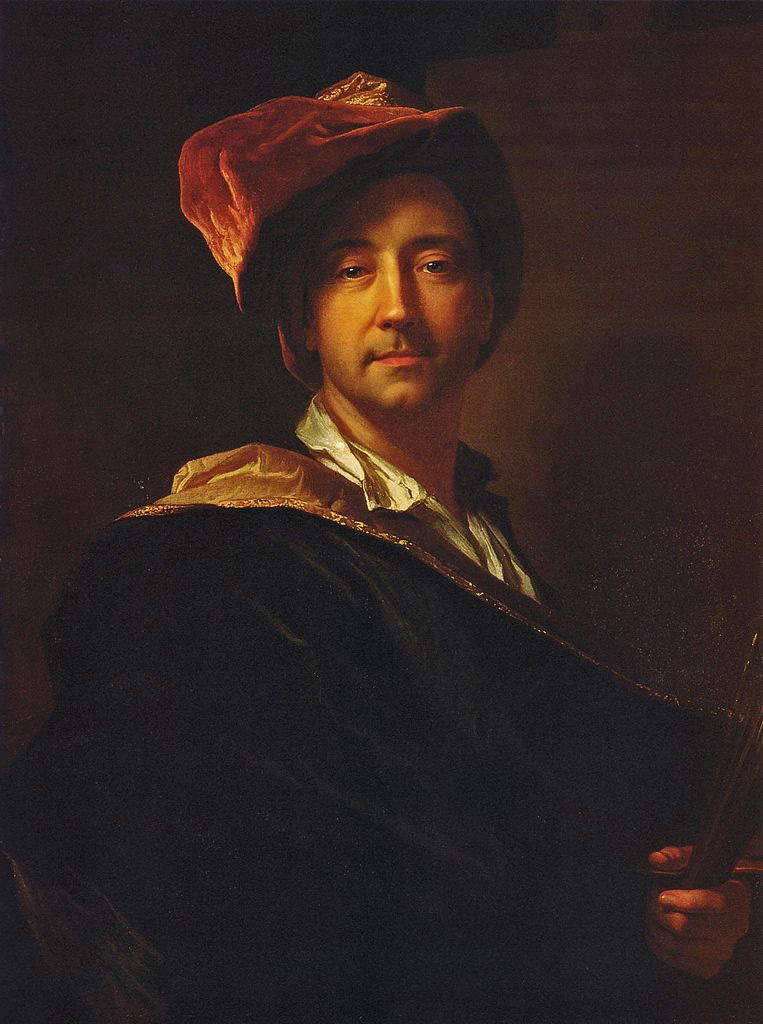 |
| Hyacinthe Rigaud, Self-Portrait with Turban (1698; oil on canvas, 84 x 67 cm; Perpignan, Musée Hyacinthe Rigaud) |
The passion for painting manifested itself in him as a child; this artistic impulse already ran in his family: his father, uncle and even grandfather worked in this field. Left fatherless at a very young age, it was up to his mother to indulge her son’s artistic taste, allowing him to study with artists who would follow him in his training. He then went to Carcassonne, and then to Montpellier, where his master Paul Pezet had a rich collection of Flemish paintings, including Pieter Paul Rubens (Siegen, 1577 - Antwerp, 1640) and Anton van Dyck (Antwerp, 1599 - London, 1641), through whom the young Rigaud’s art began to be influenced, particularly in portraiture. After a period of training also in Lyon, he wanted to perfect his skills in Paris, and in 1682 he won the first painting prize announced by theAcademy.
It happened later that the first painter of King Louis XIV of France, Charles Le Brun (Paris, 1619 - 1690), noticed his great skills as a portrait painter: in particular, he had the opportunity to admire one of his portraits of François Girardon (Troyes, 1628 - Paris, 1715), considered among the greatest sculptors of that time. Le Brun saw Rigaud’s talent for depicting the subjects of his paintings with perfect likeness, to which he added another aspect, namely, being able to capture the significant features of their character and physiognomy and make them visible, concrete on the canvas. Almost selfishly, Le Brun turned him away from the idea of moving to Rome, suggesting that he stay in France, surrounded by the milieu of that nobility. He then became a professor at the Academy of Painting, of which years later he became rector and eventually director. However, Rigaud reached the pinnacle of his artistic activity with a very important commission when in 1701 he produced the Portrait of King Louis XIV, now in the Louvre in Paris. It is a portrait from life, and this will be the model for royal portraits for more than a century. The king appears standing proudly and proudly, clad in broad, carefully decorated draperies. He is set against an imposing architectural backdrop, in which the artist has created lighting effects that reflect both on the figure of the Sun King and on the fabrics he himself wears and those that surround him in a kind of curtain. His right hand rests on a staff, a martial scepter with the fleur-de-lis symbol.
His portrayal of Louis XIV and the princes of the royal family earned him a reputation as a court painter. Despite the characteristic wide draperies and luxury in accessories, his works cannot be considered exaggerated, but rather depict the solemnity and pride of his noble subjects, mostly in most cases male.
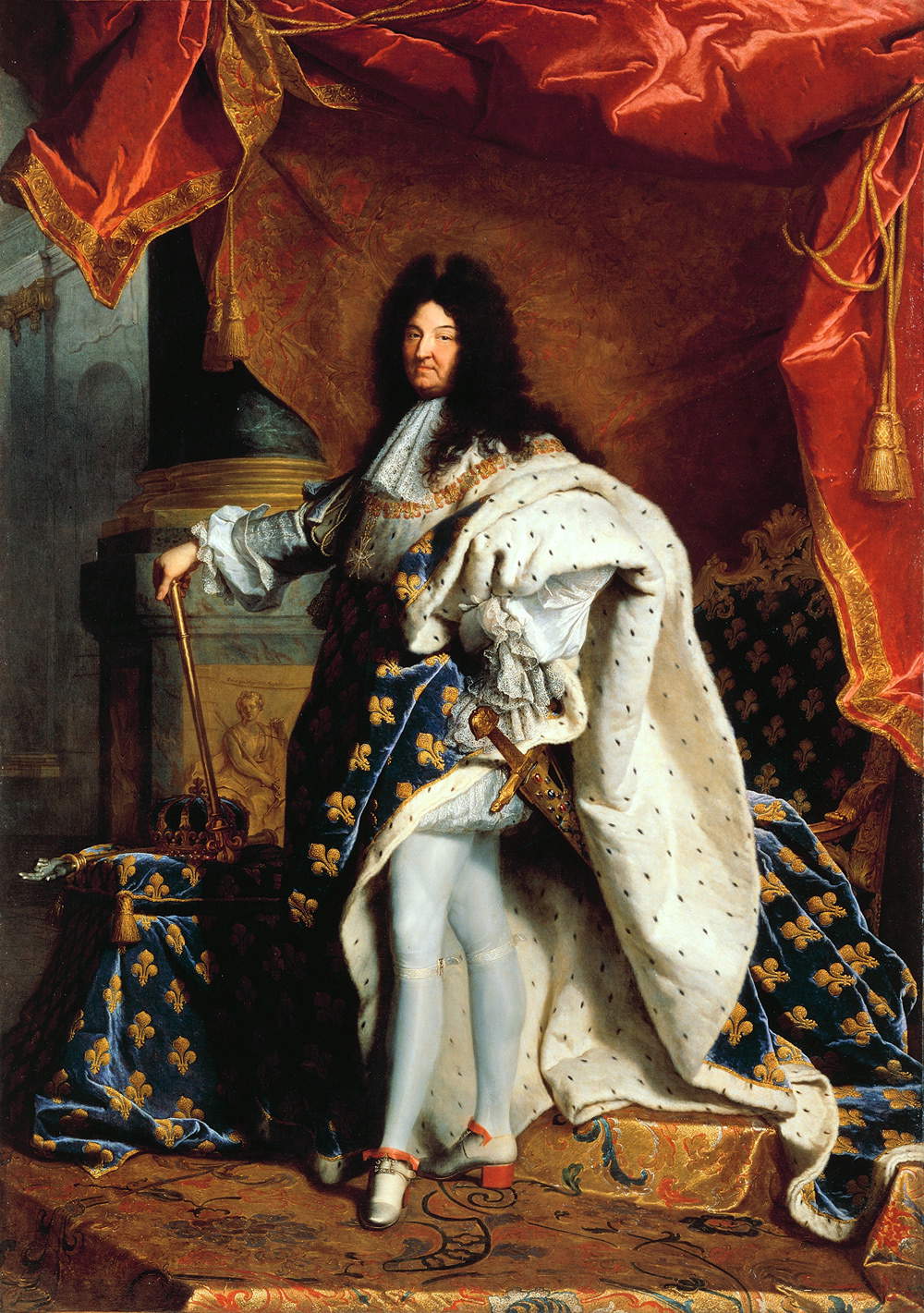 |
| Hyacinthe Rigaud, Portrait of Louis XIV (1701; oil on canvas, 277 x 194 cm; Paris, Louvre) |
In fact, for his portraits he almost never chose women, because according to his thinking if “I make them what they are, they are not found beautiful enough; if I embellish them too much, they do not resemble me.” He was far from indifferent to one, however: a lady wished to have a painter decorate her attic, and he sent one of his servants in search of an artist to take care of her. The search stopped precisely at Rigaud, who promised to be punctual in arriving at the indicated dwelling. The woman very graciously welcomed the good-looking man, and even the latter did not remain impassive in front of her; he returned to see her several times and finally they were united in marriage. After a life spent together, when in 1742 his wife died, grief haunted him, quickly leading to his death a year later at the age of eighty-three.
On account of his great skill in producing portraits, a genre that moreover was widespread in the seventeenth century, especially in the Flanders area, Hyacinthe Rigaud was nicknamed the French van Dyck. Indeed, van Dyck, too, made portraits of members of the Italian and European courts, at first becoming court painter to the Habsburgs and later official painter to Charles I Stuart. In addition to these, van Dyck portrayed figures of the Genoese nobility, as the painter stayed in the city of Genoa in the 1620s: an extraordinary and celebrated example of the Flemish artist’s portraiture is the Portrait of Ansaldo Pallavicino, painted between 1621 and 1623: the still-child son of Agostino Pallavicini, a Genoese patrician who later became doge of Genoa, is depicted standing, with a tender face in profile and dressed in very elegant and finely decorated clothes; Ansaldo was to be the second owner of the Palazzo di Pellicceria, now better known as the Palazzo Spinola, which is why it remains in the collections of the present palace.
 |
| Anton van Dyck, Portrait of Ansaldo Pallavicino (c. 1625; oil on canvas, 108 x 64 cm; Genoa, National Gallery of Palazzo Spinola) |
In the 1680s an event occurred that caused the city of Genoa to change its course in favor of a decidedly French taste: on May 17, 1684 the French fleet sent one hundred and forty ships into the Gulf of Genoa and bombarded the city for eleven days. The reasons could be sought mainly in the established alliance of the Ligurian city with Spain, which created maritime trade impediments to France. The Sun King wanted at all costs a declaration of submission from the Genoese, but the latter resisted and did not bend to the demand.Although Genoese pride never ceased, Louis XIV won the battle, and the then reigning doge of Genoa, Francesco Maria Imperiale-Lercari, made an act of submission by going to Versailles and bowing before the king. Following this historical event, the reference in every field for Genoa became the French model: Genoese personalities entertained diplomatic activities with Paris; from the 1790s onward, French textiles, jewelry, silverware and paintings arrived in the palaces of Genoese nobles, purchased or directly commissioned by Genoese returning from long sojourns in Paris, and it was in this cultural climate that the art of Rigaud, whose Parisian atelier became fundamental in terms of coeval portraiture, entered the scene. The Genoese vied to be portrayed by the portraitists of the French court, foremost among them Hyacinthe Rigaud.
These portraits include the alleged Giacomo Lomellini, and those of Nicolò Cattaneo, Nicolò Durazzo, Stefano Gentile, Giovanni Francesco II Brig nole-Sale, and Anton Giulio II Brignole-Sale. The latter belonged to one of the most prominent families in Genoa: from entrepreneurial activity in textiles, he had become part of the city’s aristocracy. Van Dyck had also portrayed him in an equestrian painting in 1627, a work now preserved in Palazzo Rosso. A very curious and unusual aspect for a Genoese, Anton Giulio loved luxury and spent a lot of money on a lavish lifestyle that was anything but frugal. His father, Giovanni Francesco I, elected doge of the city in 1635, declared that his son “spent without knowing what he was spending”: for his wedding to Isabella Brignole he had an entire wardrobe delivered by Parisian correspondents, while lace and sable furs arrived from Milan and Florence. On the occasion of his assignment as envoy extraordinaire of the Republic, in order to negotiate with the King of France the release of Piedmontese officers imprisoned by the Duke D’Oria, he surrounded himself with the services of the cook, personal servant and dogs from Brussels as far as Marseilles; he then donated an emerald ring to Captain Napoleon Lomellini, who had accompanied him as far as Antibes, and for travel to Paris he had a carriage worth 4143 liras made.
In his account book, Rigaud noted in 1704 the completion of the portrait of “Mr le marquis Brignoly, envoyé de Gênes” for the price of 300 pounds. The painting turns out to be signed and dated in the lower right-hand corner “Hyacinthe Rigaud f. à Paris / 1704”; also present on the back is a plug with a wax seal depicting the family coat of arms, namely a rampant lion. The figure of the Genoese nobleman occupies the entire canvas and stands out against a background of dark tones; Anton Julius appears looking to the right and with his right hand touches, with rhetorical gesture and set poses, a shining helmet placed in the foreground in the lower part of the painting. He wears a brown silk tailcoat, an armored corselet, and a blue velvet cloak. The artist dwells on the lace and gold embroidery of the dress with lighter brushstrokes to give silk effect to the fabrics and creates a mirror effect on the corselet and helmet. The long, thick hair appears almost evanescent in the background, and the face is rendered so realistically that it almost seems as if one can touch her skin; finally, there is a contrast between the power of her gaze and the lips that sketch a smile. Several copies of the original painting were made, by Lorenzo de Ferrari (Genoa, 1680 - 1744), by Mulinaretto (Genoa, 1660 - Monticelli d’Ongina, 1745): in fact, the payment of 76 lire by the second-born Giovanni Giacomo “à Lorenzino De Ferrari Pittore per copia del ritratto del detto quondam Signor Anton Giulio ricavata dal ritratto fatto da Rigò in Parigi” is documented.
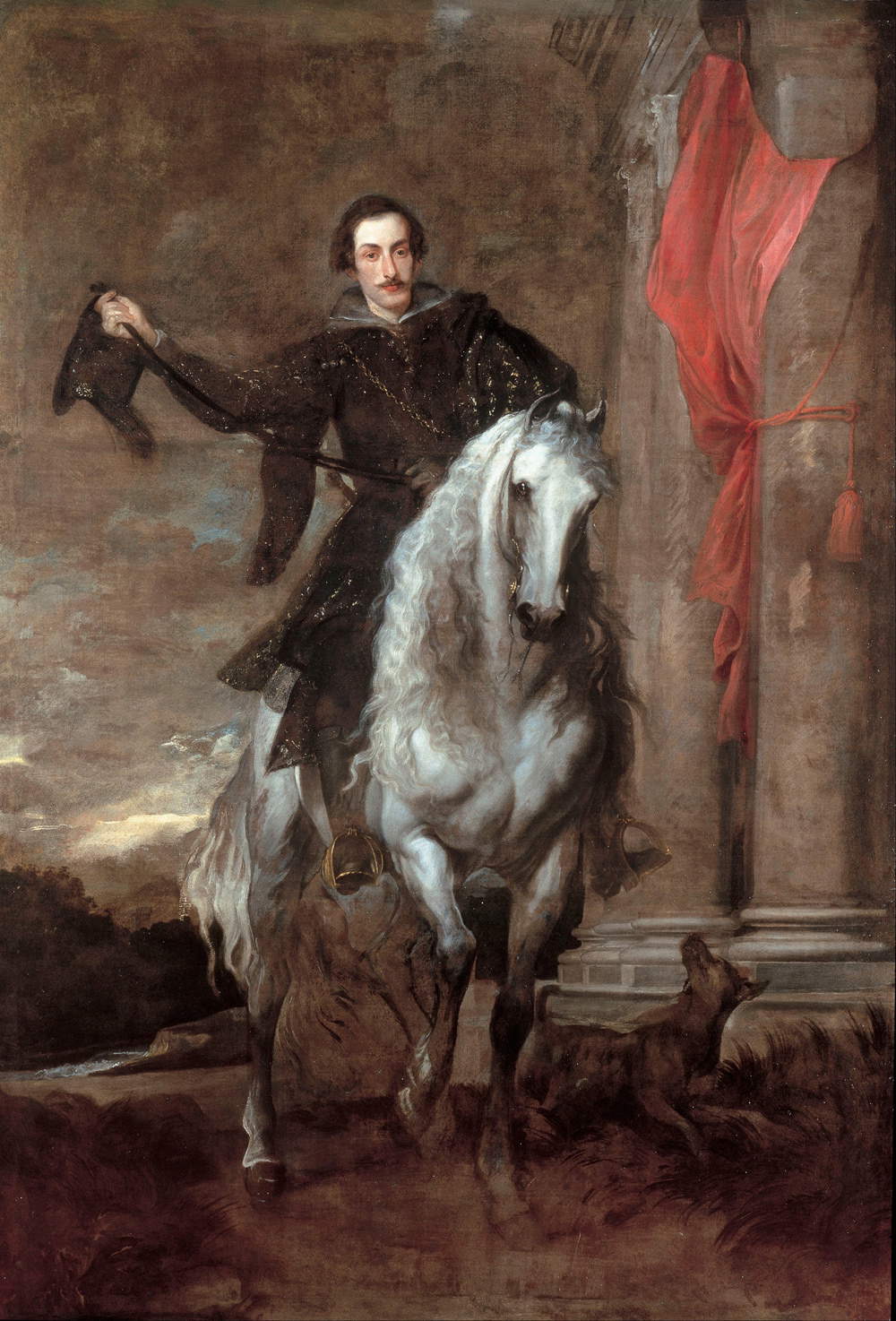 |
| Anton van Dyck, Equestrian Portrait of Anton Giulio Brignole-Sale (1627; oil on canvas, 282 x 198 cm; Genoa, Strada Nuova Museums, Palazzo Rosso) |
 |
| Hyacinthe Rigaud, Portrait of Anton Giulio Brignole-Sale (1704; oil on canvas, 91.5 x 73.4 cm; Genoa, National Gallery of Palazzo Spinola) |
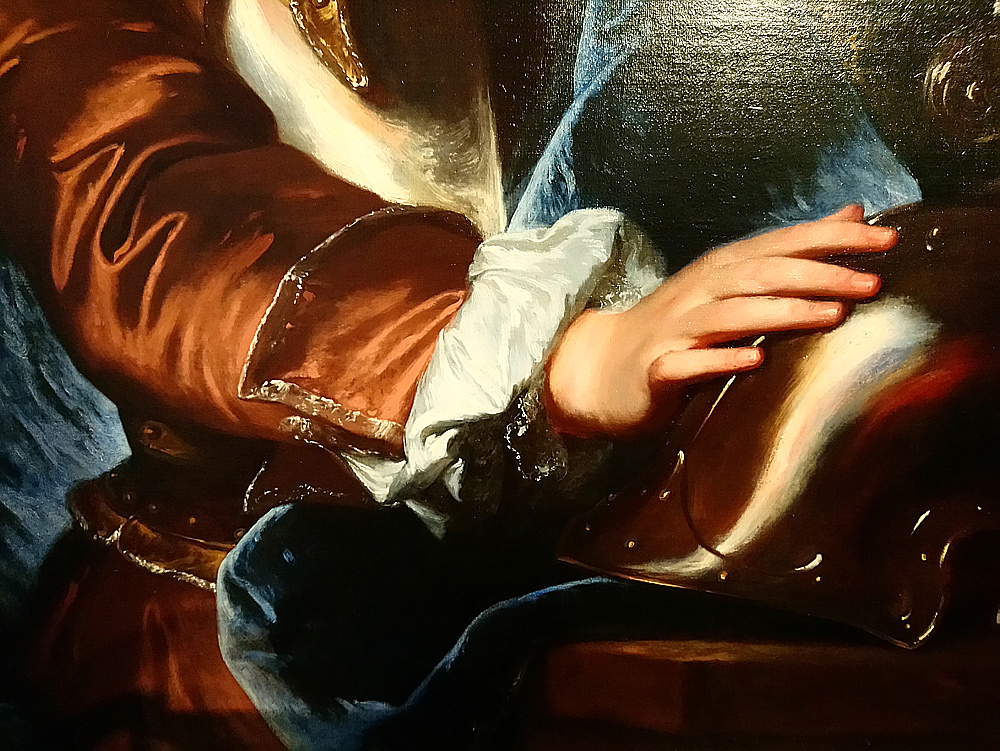 |
| Hyacinthe Rigaud, Portrait of Anton Giulio Brignole-Sale, detail |
Initially attributed by means of a single photographic image to Giovanni Maria Delle Piane, known as the Mulinaretto, was the alleged portrait of Stefano Gentile, also a Genoese nobleman and minister resident in Paris from 1705 to 1709. Again, the subject depicted occupies the entire surface of the canvas: a half-bust in profile with his face, framed by a flowing wig, facing the viewer. Also noticeable is a hint of a harelip. The nobleman is dressed in sumptuous civilian garb: a brown tailcoat from which a lace tie sprouts, a blue-violet velvet cloak with a gold brocade lapel embellished with a floral pattern. A country landscape can be seen in the background. The painting is signed and dated on the back "Paint par Hyacinthe Rigaud à Paris 1709." It was precisely the Genoese nobleman who commissioned the artist to paint a portrait of him along with another that was to depict, as a pendant, his consort: the paintings were later to be transferred to Genoa on his departure from Paris in the same year.
Another portrait to be considered among Rigaud’s major portraits is that of Giovanni Francesco II Brignole-Sale, a nobleman belonging to the aforementioned Brignole-Sale family and minister resident in Paris from 1737 to 1739. Owner of a huge amount of luxury goods, he led, like his eldest son Anton Julius, a lavish lifestyle: during his stay in Paris he rented and furnished three large apartments to which he added the corresponding servants.
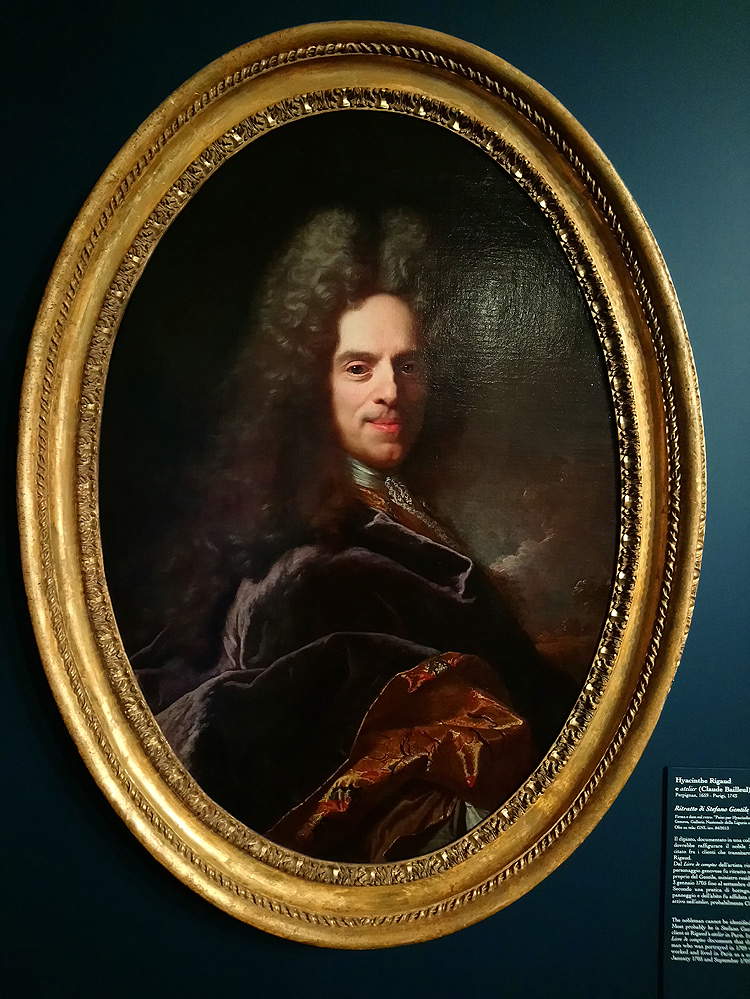 |
| Hyacinthe Rigaud and atelier, Portrait of Stefano Gentile? (1709; oil on canvas, 86.5 x 60.5 cm; Genoa, Galleria Nazionale di Palazzo Spinola) |
 |
| Hyacinthe Rigaud, Portrait of Giovanni Francesco II Brignole-Sale (1739; oil on canvas, 101.5 x 80.2 cm; Genoa, Musei di Strada Nuova, Palazzo Rosso) |
 |
| Hyacinthe Rigaud, Portrait of Battina Raggi (1739; oil on canvas, 101 x 80 cm; Genoa, Musei di Strada Nuova, Palazzo Rosso) |
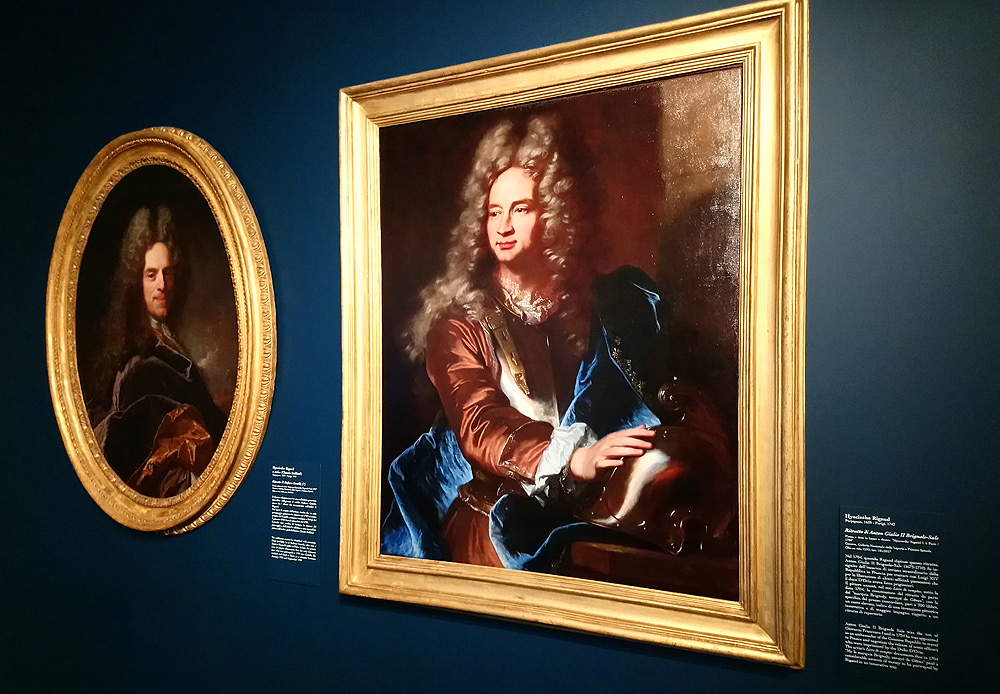 |
| Rigaud’s portraits compared at the National Gallery of Palazzo Spinola |
A receipt preserved in the Brignole-Sale Fund testifies to the execution in 1739 of the portrait of Giovanni Francesco and his consort Battina Raggi. The two canvases were placed in the private rooms of the magnificent apartment in Palazzo Rosso: in the Descrizione della galleria de quadri esistenti nel palazzo del Serenissimo Duge Gio Francesco Brignole-Sale, dating back to 1748, we read the presence of the “Ritratto di sua Eccellenza Marchese Gio Francesco di Rigaud vestito d’armi mezza figura bellissima tanto nel disegno quanto nel colorito replicato più volte, né si è veduto altro ritratto di superior bontà.” However, the two paintings are to be considered within the artist’s last production because of the elegant poses in mirror dialogue, the more tempered rendering of the complexions, and the puffy coats with unreal lines. The marquis is depicted half-length against a verdant background with architectural elements; his face with a sketchy smile is illuminated by a beam of light coming from the left. He wears a fine corselet, a broad purple cloak, from which the hilt of his sword protrudes toward the viewer from the lower right corner. His wife Battina is depicted wearing a broad light-colored decorated dress and orange blossoms in her gathered hair.
Both the portrait of the alleged Stefano Gentile and the latter belong to Genoese collections: the former is kept in the National Gallery of Liguria at Palazzo Spinola, while the canvases depicting Giovanni Francesco II Brignole-Sale and Battina Raggi are kept at Palazzo Rosso. Recently, the original painting by Hyacinthe Rigaud depicting Anton Julius II Brignole-Sale, the “spendthrift” Genoese nobleman, was purchased by the National Gallery at Palazzo Spinola and can be admired in all its pride; thanks to thisimportant acquisition, the Palace’s collection has been enriched with a fundamental testimony to that direct relationship of theGenoese aristocracy with Parisian painters. A relevant trait to know part of the history of the city of Genoa.
Reference bibliography
Warning: the translation into English of the original Italian article was created using automatic tools. We undertake to review all articles, but we do not guarantee the total absence of inaccuracies in the translation due to the program. You can find the original by clicking on the ITA button. If you find any mistake,please contact us.